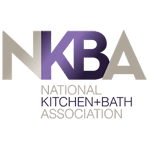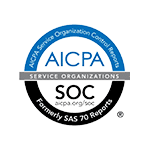To ask or not to ask? That is the question
Do you remember that kid in class who always raised his or her hand — the one who always had an answer? On the one hand, your classmate may have been informed and was confident that they had an answer worth sharing. On the other hand, it was hard to like that person. Having the right answer meant gaining approval and being the center of attention more than anything else. But things have changed. To work together as a team, we need more conversations, better listeners, people who thoughtfully answer questions (sometimes by asking more questions) and fewer shouters with “right answers.”
As CEO, a significant part of my job is to sit and learn from people. I’ve participated in thousands if not tens of thousands of meetings with teams of people across many disciplines and at many companies. My biggest takeaway from all of these meetings? Nothing is more important than leading with questions and then making space to listen.
Leading with questions: What does it mean?
Leading with questions is simply the use of interrogative statements (aka, questions) to move a meeting along and get the participants talking and sharing in a meaningful way. It’s a strategy that allows me to use meetings to fill my own knowledge gaps, unearth hidden issues and invite participation. Any meeting leader or participant can lead with questions to encourage dialogue, ensure solid communication among high-performing team members, and to get the most out of a meeting.
How to lead with a question
We’ve all been there: Whomever is leading the meeting starts by reading a document out loud before asking if there are any questions. The human podcast, so to speak. The speaker drones on, and the assembled do their best to feign interest while quietly wondering how much longer they will have to endure this interruption in the flow of their day.
To lead with questions, you need to first change your mindset about meetings. That starts by understanding that the purpose of a meeting should NEVER be to dispense information. You can easily share data via email, which can then be read by the recipient at a time of their choosing, increasing the likelihood that they will retain the information.
Meetings should always be used to collect information. When there are multiple stakeholders involved, the best way to collect information is to gather folks into a room and get them talking. This collaborative conversational method of sharing of information can lead to surprising insights or breakthroughs that no individual ever would have hit upon. It’s what meetings should really be all about.
How does this play out in a real meeting?
Leading with questions requires that you change some of the ways you act during a meeting. Instead of calling a meeting and reading through a list of to-dos or a PowerPoint before asking if anyone has any questions, try giving attendees a block of time to review information on their own before the meeting. You are now free to begin the meeting without the burden of having to review or explain why you’ve gathered the troops in the first place.
And there’s no shortage of questions for you to ask. Here’s just a few:
- How do you feel about this plan?
- What is your initial reaction?
- Is there anything missing?
- Do you have any concerns?
- What would you change?
- Does this feel right?
- How does this work for you?
- Are there any big challenges with this approach that we might not be aware of?
- If you could teleport anywhere right now, where would you go? (Just checking if you’re still with me.)
Now that you’ve changed your mindset and are ready to lead with questions, the next step is to practice formulating those questions …
How to ask a great question: The five W’s
The five W’s are a tried and true formula for gathering information on an event. It’s probably been a while since you studied the five W’s in school, and you may want to check out the above video to refresh your memory.
In case they slipped your mind, the five W’s are:
- Who
- What
- When
- Where
- Why
- How
Yes, there’s also a bonus W: How. Ok, so not technically a W word, yet still often included in the list. Life is imperfect.
The five W’s are the bedrock of journalism, and inform every story that you read online or in the local paper (perish the thought). Every question you ask should be trying to illuminate at least one of the five W’s.
For a full examination of the W’s and how to use them, check out LSU Director of Student Media Steve Buttry’s page, where he put together an excellent resource on using the five W’s when writing for the Web. And if you want some practice, there’s an online worksheet available for download that will help you map out the Five W’s of any issue.
Say what? How to listen effectively
Listening is a powerful tool. It is an investment in relationships and the key to problem solving. Most importantly, listening demonstrates respect for a variety of inputs and perspectives, grows relationships, and reduces conflict. When your team members feel heard, they become more likely to share important information with you when it’s most essential.
Here are some tips to start with:
- Give the speaker your full attention (put down your phone and put your laptop away!)
- Make eye contact
- Ask follow up questions
- Take notes and write a summary of the meeting
Want more? Here’s 10 additional ways to become a better listener.
How to run a meeting using a “lead with questions” strategy
Finally, here are three tips for getting the maximum value out of a meeting by making space to talking in questions and actively listen:
1. Share important information in writing before you meet
There is almost never a need to hold a meeting simply to read a document. Before you schedule a meeting, make sure that you’re giving yourself time to put everything in writing and give participants a chance to review prior to the meeting. Meetings should be used as opportunities to go beyond the document and learn from team members their thoughts and perceived impacts of the information.
2 You have something to say — but that doesn’t mean you need to say it in a meeting
When you conceive of your meeting, think of the value that you can extract by getting to know what other people are thinking, not necessarily by shouting out everything that comes into your mind and dominating the conversation. You should walk into the meeting seeking out a range of perspectives, rather than putting yourself in the center of the stage.
3. Are you dominating the conversation? Take a step back and ask a question
It happens! Even the best planning and intentions can lead one down unexpected roads. You may find yourself on a roll, a rampage or even delivering an unintentional sermon. Practicing self-awareness by putting the brakes on your own monologues is important in getting the best input from team members.
Give listening and learning during meetings a try. Not only will you be able to do better work, but you’ll build better relationships along the way.
Beck Besecker is CEO and co-founder of 3D Cloud.










